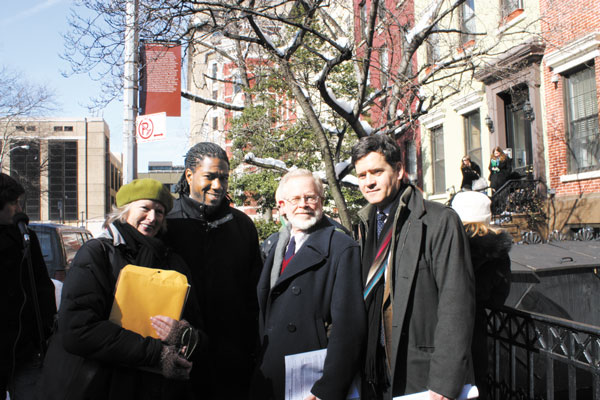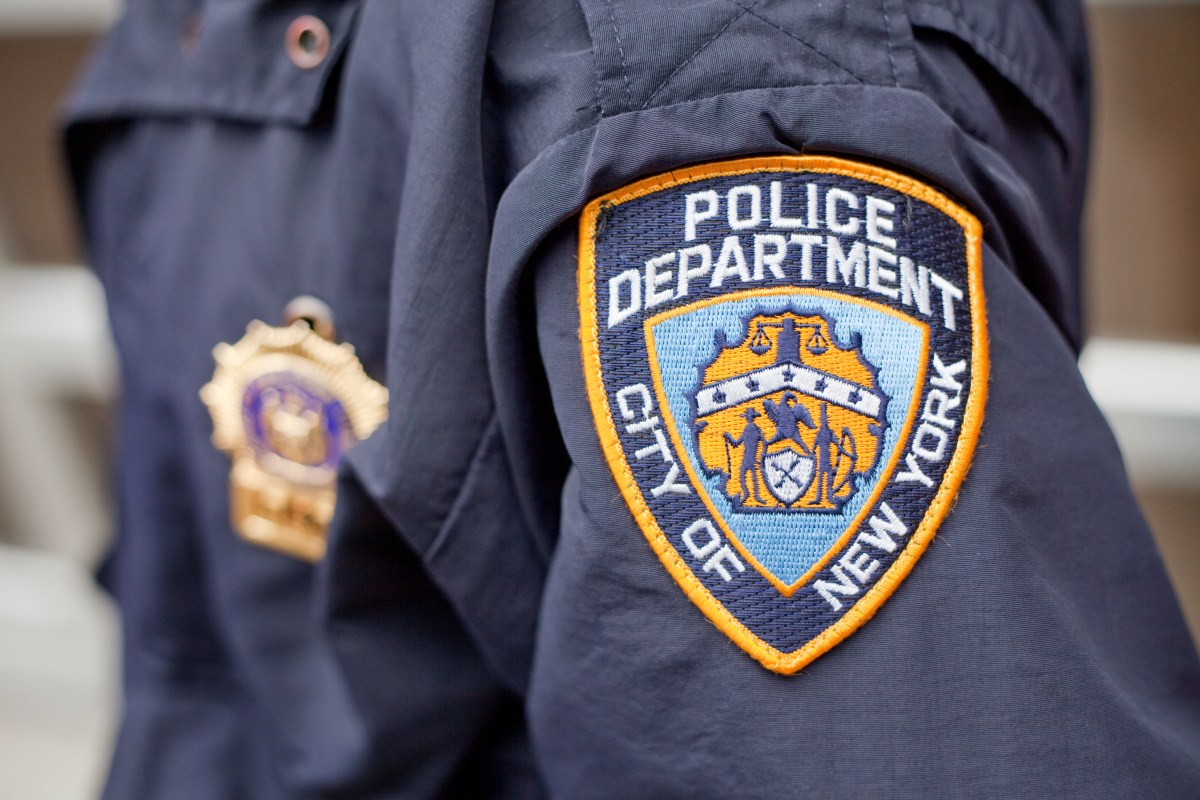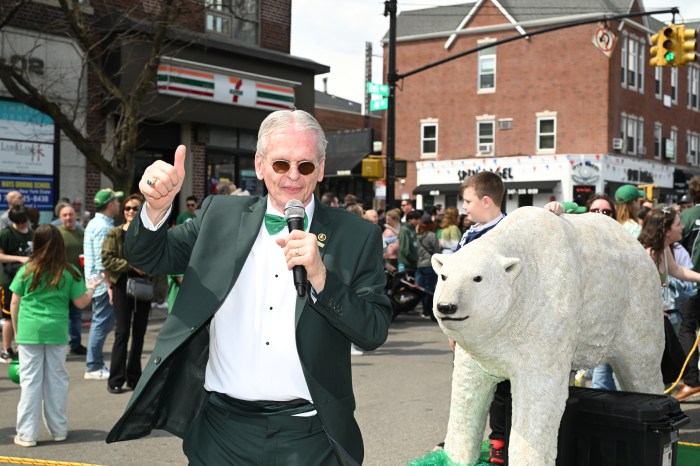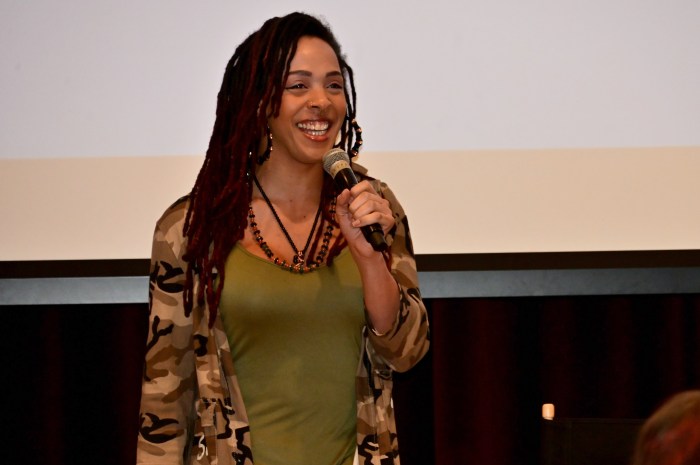
Assemblymember Richard Gottfried.
BY LINCOLN ANDERSON | It’s looking increasingly like Pier 40 won’t become the Lower West Side’s new residential hot spot — at least not anytime soon — as the number of key local politicians opposing, or at least currently uncomfortable with, the idea continues to snowball.
Last week, Assemblymember Richard Gottfried, who the only local politician who had been receptive to the possibility of allowing housing at the West Houston St. pier, declared the residential option now should be “off the table” because of “adamant opposition.”
In a statement March 12, Gottfried said, “The Hudson River Park needs more open park space and fewer obstructions to views of the river. We need to support completion of the park’s construction and capital maintenance with revenue that comes from projects that have strong community support….”
He wants the Hudson River Park Act to be ‘‘opened up” to allow for more uses to be considered on Piers 40 and 76 (at W. 36th St.). “Some advocate high-rent offices and stores on those piers. However, allowing housing in that mix, at least at Pier 40, has adamant opposition, so I think it should be off the table. To protect the whole park’s future,” he said. “We all need to focus on achievable sources of revenue.”
Gottfried, whose district includes Chelsea and part of the Village. co-authored the 1998 park act, which expressly prohibits housing in Hudson River Park. But with the park now mired in a cash crisis and Pier 40 needing costly repairs, Gottfried last summer became a convert to the idea of allowing of allowing housing.
Two competing design concepts for the pier — one by the Pier 40 Champions youth sports leagues group and the other by developer Douglas Durst — would each require a modification of the park act to be allowed.
The Champions plan, with an estimated cost of $691 million, includes two 22-story residential towers that would be built at the foot of the pier, whose existing athletic fields would be doubled in size. Durst’s plan, slated at $384 million, calls for an adaptive reuse of the pier’s existing three-story shed structure, transforming it into commercial office space for high-tech companies and retail space, while the fields would be kept at the current size and raised one level to prevent future flooding by Sandy-like superstorms.
Both Champions and Durst say their plan’s costs include fixing up Pier 40, would generate $10 million annually for the park and would be the least disruptive of use of the pier’s athletic fields.
Hudson River Park is supposed to be financially self-supporting, and pressure is ratcheting up on the 15-acre Pier 40 to be even more of a cash cow for the park than it has been already; Pier 40 historically has provided about 35 percent of the park’s annual revenue, but the cost of repairing the pier’s aging infrastructure is now becoming a financial drain on the park.
However, ever since the option of residential use in the park was broached by the Hudson River Park Trust last year, Assemblymember Deborah Glick — whose district contains Pier 40 — has vigorously opposed it, making passage of the necessary legislation highly unlikely. She is amenable to office use, however, for the Durst plan.
Last week, the news that City Council Speaker Christine Quinn, whose district includes Pier 40, has come out strongly against residential use at the pier sent shockwaves rippling up and down the waterfront. She also said she would work toward expanding field space on the pier.
The day after Quinn’s statement, she joined other key housing opponents — Glick, State Senators Brad Hoylman and Daniel Squadron — in firing off a joint letter to Madelyn Wils, the Trust’s executive director, in which they stated they unequivocally oppose housing at the 15-acre West Houston St. pier.
“First and most importantly, we must be clear, that under no circumstances will we support any residential development at Pier 40,” Quinn and the three politicians wrote in their letter to Wils. “Continued focus by the Hudson River Park Trust on this issue will not help us move the process forward toward a feasible solution to save the pier and the playing fields it houses….
“As leaders in this community we must work together to find solutions and not foster unnecessary divisions among ourselves.”
The four pols, however, also stated, “it is not enough to preserve and protect the active space at Pier 40…. We must also do everything we can do to work together to add more playing fields at Pier 40 and throughout the park. We are committed to working with [the Trust] to find and facilitate such locations.”
Asked to comment on the increasing lack of political support for residential use at Pier 40, Trust President Wils issued a statement that did not rule out the “R” word, and said, in part:
“The Trust has diligently worked to protect the ball fields and is eager to provide additional recreation opportunities. However, we can only do so if we generate necessary revenues to support those opportunities. As it stands today, Pier 40 is actually draining money from the rest of the park, despite the intent of the Hudson River Park Act for Pier 40 to help support the entirety of the park.
“Though the Trust does not favor one use over another, the community has been clear that it wants to expand the available uses allowed on Pier 40, as indicated by the failure of two previous R.F.P.s. Since that time, infrastructure problems at Pier 40 have gotten far worse, putting the pier in actual peril.
“The park act must be changed to allow for additional uses on Pier 40,” Wils stressed. “We will continue to work with the governor, mayor, local elected officials and the community to put the pier — and therefore the park — on sound footing for the future.”
Asked about Gottfried’s latest position on housing at Pier 40, Tobi Bergman, the leader of the Pier 40 Champions, responded that cooperation “needs to stay on the table.”
“Champions is fighting for a wonderful, open, riverside park for everyone and for more sports fields so every child gets to play,” Bergman said. “Our focus now is to get funds allocated to do critical repairs this year and to respond quickly to the play-space crisis affecting our burgeoning residential neighborhoods. Why? Because the worst place to be is under the gun where we have to sacrifice the extraordinary and irreplaceable opportunities of the site to deal with the structural and financial pressures of the current situation.”
So far, though, proposed legislation to change the park act actually has not included allowing housing in the park. According to a well-placed source, “Various versions of bills have allowed office, retail, hotel, some miscellaneous other uses,” but not residential. Last year, Gottfried put together a last-minute bill with changes to the park act.
The source said the drafts of the bills have all originated with the Trust. Word is that some language in last year’s bill also came from Assembly Speaker Sheldon Silver’s staff, largely in an effort to come up with a proposal including elements that both Glick and Gottfried could accept.
There is reportedly “a long list of things” that have been considered and may be in a new bill, including: longer lease terms at Piers 40 and 76; allowing additional uses at Piers 40 and 76; allowing the Trust to bond for infrastructure; redefining the park boundary down by Battery Park City; turning over the city’s share of Pier 76 to the park (currently, the city would get half of the pier’s commercial revenue after its redevelopment — the city tow pound is located there now); getting more revenue from the passenger ship terminal and from the passenger ships; simplifying zoning compliance (meaning removal of some aspects of the city’s ULURP review process in the park); and the proposed neighborhood improvement district or NID (though, according to the source, this actually probably does not require state legislation).
As for trying to allow residential use at Pier 76 — which is in the part of Hudson River Park that is in Gottfried’s district — he is reportedly now trying to gauge what the community wants there, and is “not ruling it out yet.”
Meanwhile, in response to a query, Cory Johnson, a candidate running to replace Quinn, said he also opposed housing near the pier, but “open public space and recreational fields should be increased on Pier 40 and throughout the entire length of the park from the Battery to 59th St.
At a candidates forum last week one of Johnson’s opponents, Yetta Kurland, reportedly said — unprompted — that, if there is to be housing at Pier 40, then it should include artists housing.
The next day, Kurland said in an interview that, “It appears that there will be development on Pier 40 and that it may be residential, which I oppose for a number of reasons that Deborah Glick has eloquently articulated,” Kurland said. “But in the event the plan goes through with residential housing, I will work to create affordable and middle-class housing that will reflect the needs of our community and could include artists housing. Conversely, if Glick’s plan goes through and there is commercial space, I will work to create a community-based venue for artists to utilize.”
Alexander Meadows, another Council District 3 candidate, said, “I will fight tooth and nail to ensure that our precious parklands are not invaded by irresponsible overdevelopment.”




































